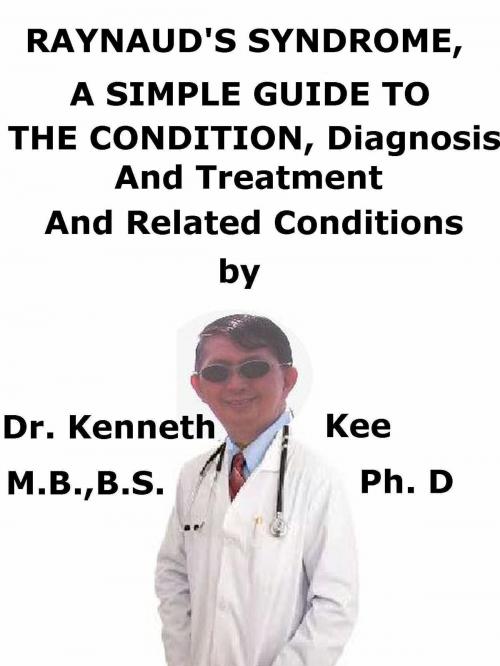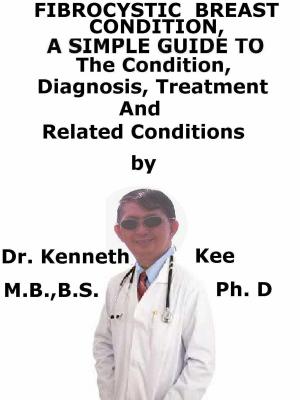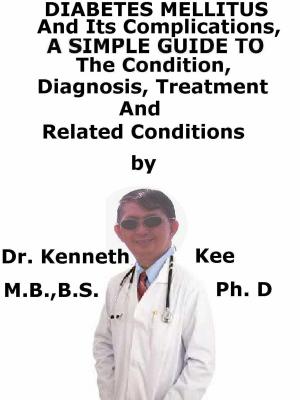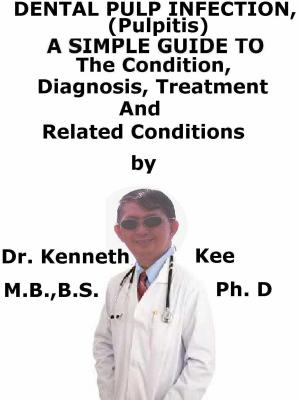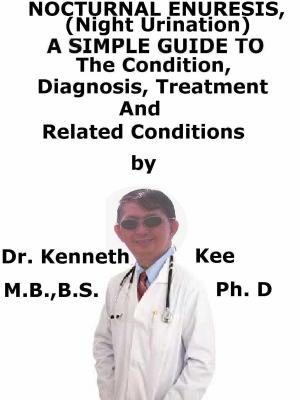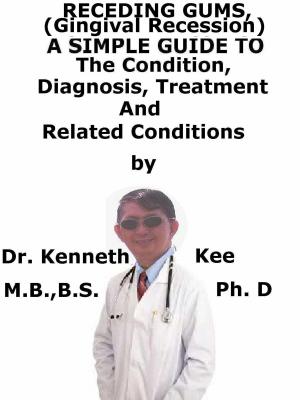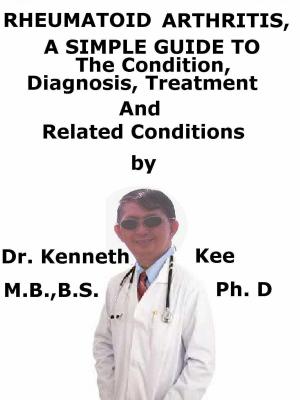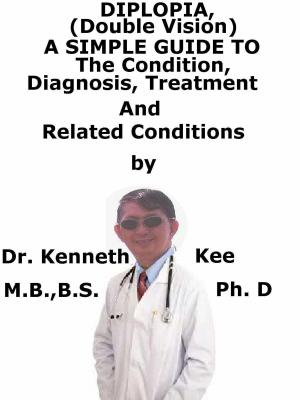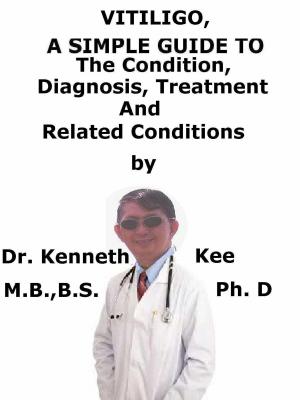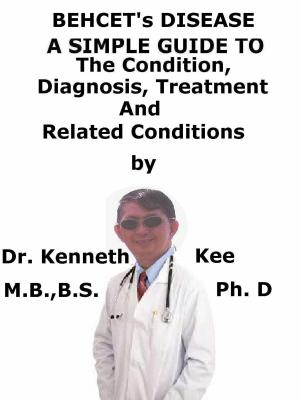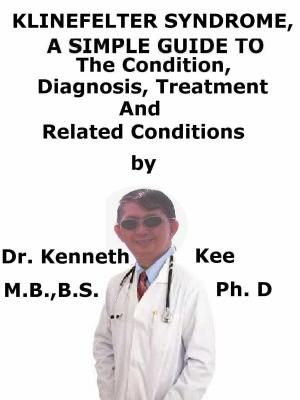Raynaud’s Syndrome, A Simple Guide To The Condition, Diagnosis, Treatment And Related Conditions
Nonfiction, Health & Well Being, Medical, Specialties, Internal Medicine, Endocrinology & Metabolism, Cardiology| Author: | Kenneth Kee | ISBN: | 9781311293992 |
| Publisher: | Kenneth Kee | Publication: | February 26, 2016 |
| Imprint: | Smashwords Edition | Language: | English |
| Author: | Kenneth Kee |
| ISBN: | 9781311293992 |
| Publisher: | Kenneth Kee |
| Publication: | February 26, 2016 |
| Imprint: | Smashwords Edition |
| Language: | English |
Raynaud’s Syndrome
What is Raynaud's Syndrome?
Raynaud's Syndrome is a rare transient vasospasm of small arteries of the hand precipitated by cold.
Arteries are major blood vessels that deliver blood from the heart to different parts of the body.
Raynaud's Syndrome is a rare disorder of the blood vessels usually more in the fingers and less in the toes.
People with this disorder have attacks that cause the blood vessels to narrow.
There is typical whiteness and blueness of fingers.
When this happens, blood cannot get to the surface of the skin and the affected areas turn white and blue.
When the blood flow returns, the skin turns red and throbs or tingles.
In severe cases of Raynaud’s syndrome, blood flow loss results in sores or tissue death.
Cold weather and stress can spark off attacks of Raynaud’s syndrome.
Vasospasm (narrowing of the blood vessels) of the arteries reduces blood flow to the fingers and toes.
Rarely, the disorder involves the nose, ears, lips and nipples.
There are two main types of
1. Primary Raynaud’s Syndrome (also called Raynaud’s disease), the reason for this condition is not known.
Primary Raynaud's disease is more frequent and is likely to be less severe than secondary Raynaud's phenomenon.
2. Secondary Raynaud’s Syndrome has an underlying disease, condition, or other factor.
This form of Raynaud's is often known as the Raynaud's phenomenon.
Minimal or no blood flows to affected body parts during an attack.
Consequently, the skin may turn white and then blue for a brief period of time.
The affected areas may appear red and throb, tingle, burn, or feel numb as blood flow returns.
If you have primary or secondary Raynaud's Syndrome, cold temperatures or stress can trigger "Raynaud's attacks."
In both types of Raynaud's Syndrome, even mild or brief changes in temperature can cause Raynaud's attacks.
Removing something out of the freezer or being exposed to temperatures below 60 degrees Fahrenheit can cause the fingers to turn blue.
Most people who have Raynaud's Syndrome have no long-term tissue damage or disability.
However, people who have severe Raynaud's Syndrome can develop skin sores or gangrene from prolonged or repeated Raynaud's attacks.
Gangrene is the death or decay of body tissues.
What are the causes of Raynaud's Syndrome?
Often the cause of Raynaud's Syndrome is not known.
People in colder climates more commonly develop Raynaud's Syndrome than people in warmer areas.
Causes are:
1 .Classically cold precipitated, more common in winter
2. Emotional factors such as fear and anxiety
It may happen secondary to other conditions:
1 .Auto immune disease such as SLE
2. Arterial compression syndrome from cervical ribs
3. Hypothyroidism
TABLE OF CONTENT
Introduction
Chapter 1 Raynaud’s Syndrome
Chapter 2 Causes
Chapter 3 Symptoms
Chapter 4 Diagnosis
Chapter 5 Treatment
Chapter 6 Prognosis
Chapter 7 Hypothermia
Chapter 8 Gangrene
Epilogue
Raynaud’s Syndrome
What is Raynaud's Syndrome?
Raynaud's Syndrome is a rare transient vasospasm of small arteries of the hand precipitated by cold.
Arteries are major blood vessels that deliver blood from the heart to different parts of the body.
Raynaud's Syndrome is a rare disorder of the blood vessels usually more in the fingers and less in the toes.
People with this disorder have attacks that cause the blood vessels to narrow.
There is typical whiteness and blueness of fingers.
When this happens, blood cannot get to the surface of the skin and the affected areas turn white and blue.
When the blood flow returns, the skin turns red and throbs or tingles.
In severe cases of Raynaud’s syndrome, blood flow loss results in sores or tissue death.
Cold weather and stress can spark off attacks of Raynaud’s syndrome.
Vasospasm (narrowing of the blood vessels) of the arteries reduces blood flow to the fingers and toes.
Rarely, the disorder involves the nose, ears, lips and nipples.
There are two main types of
1. Primary Raynaud’s Syndrome (also called Raynaud’s disease), the reason for this condition is not known.
Primary Raynaud's disease is more frequent and is likely to be less severe than secondary Raynaud's phenomenon.
2. Secondary Raynaud’s Syndrome has an underlying disease, condition, or other factor.
This form of Raynaud's is often known as the Raynaud's phenomenon.
Minimal or no blood flows to affected body parts during an attack.
Consequently, the skin may turn white and then blue for a brief period of time.
The affected areas may appear red and throb, tingle, burn, or feel numb as blood flow returns.
If you have primary or secondary Raynaud's Syndrome, cold temperatures or stress can trigger "Raynaud's attacks."
In both types of Raynaud's Syndrome, even mild or brief changes in temperature can cause Raynaud's attacks.
Removing something out of the freezer or being exposed to temperatures below 60 degrees Fahrenheit can cause the fingers to turn blue.
Most people who have Raynaud's Syndrome have no long-term tissue damage or disability.
However, people who have severe Raynaud's Syndrome can develop skin sores or gangrene from prolonged or repeated Raynaud's attacks.
Gangrene is the death or decay of body tissues.
What are the causes of Raynaud's Syndrome?
Often the cause of Raynaud's Syndrome is not known.
People in colder climates more commonly develop Raynaud's Syndrome than people in warmer areas.
Causes are:
1 .Classically cold precipitated, more common in winter
2. Emotional factors such as fear and anxiety
It may happen secondary to other conditions:
1 .Auto immune disease such as SLE
2. Arterial compression syndrome from cervical ribs
3. Hypothyroidism
TABLE OF CONTENT
Introduction
Chapter 1 Raynaud’s Syndrome
Chapter 2 Causes
Chapter 3 Symptoms
Chapter 4 Diagnosis
Chapter 5 Treatment
Chapter 6 Prognosis
Chapter 7 Hypothermia
Chapter 8 Gangrene
Epilogue
